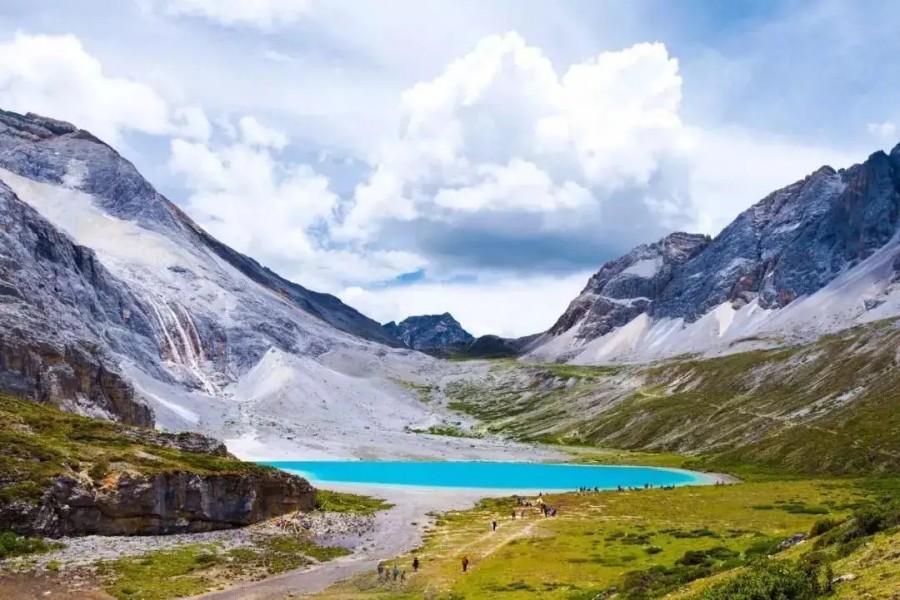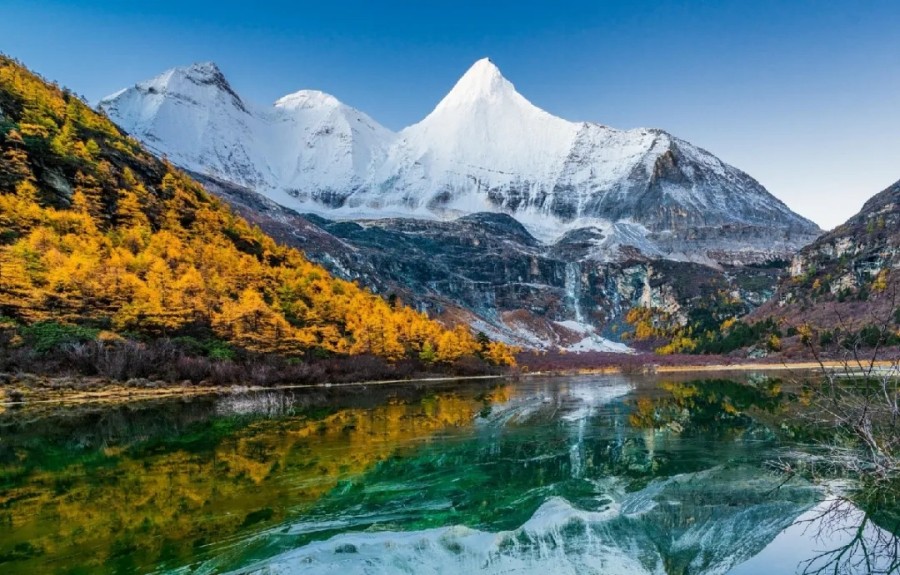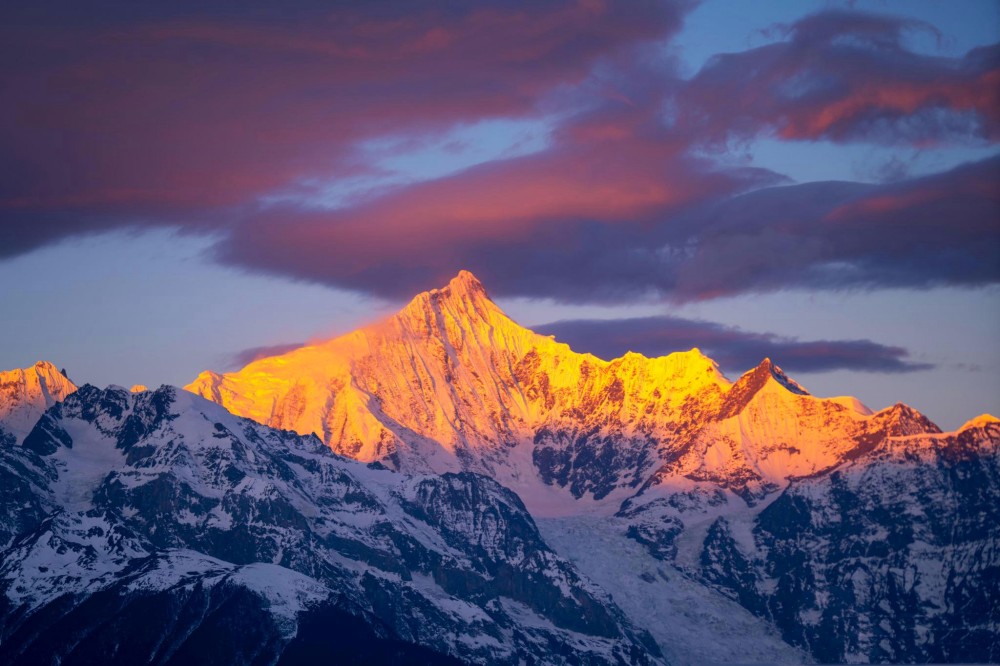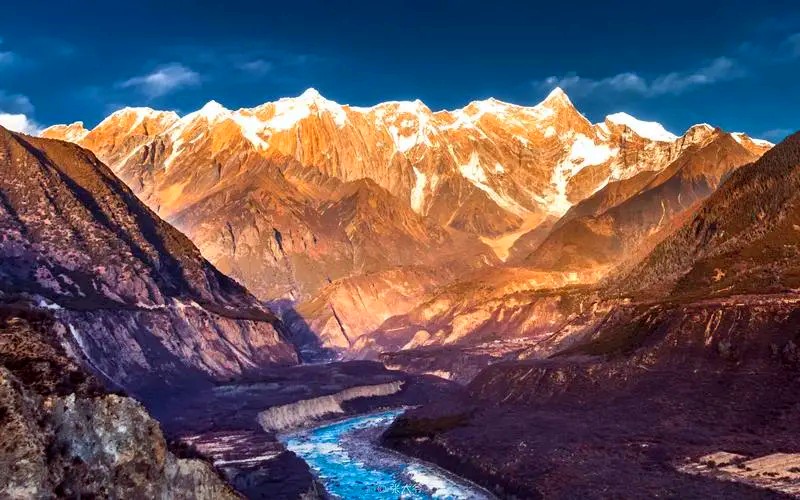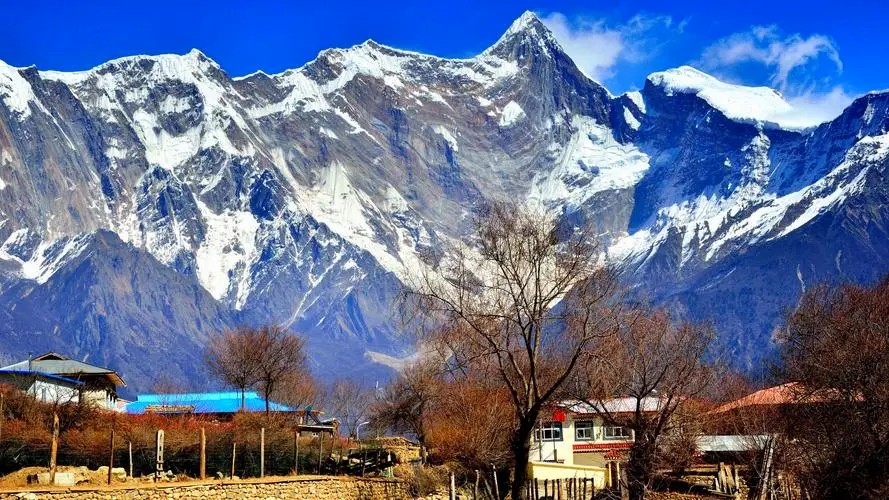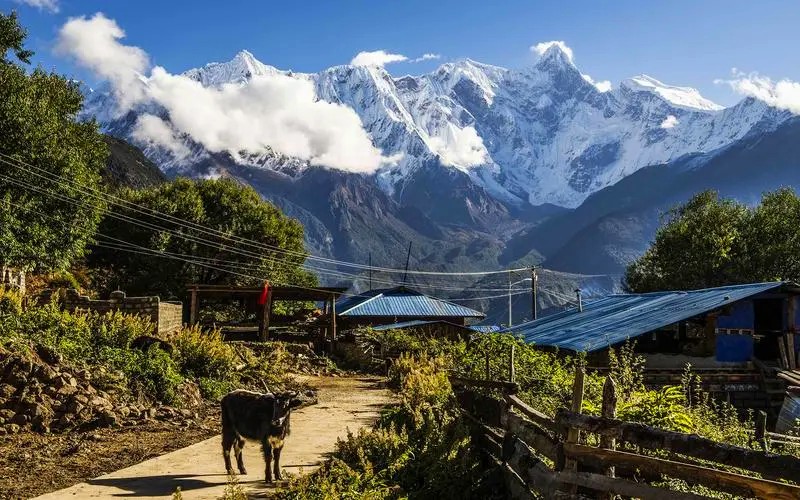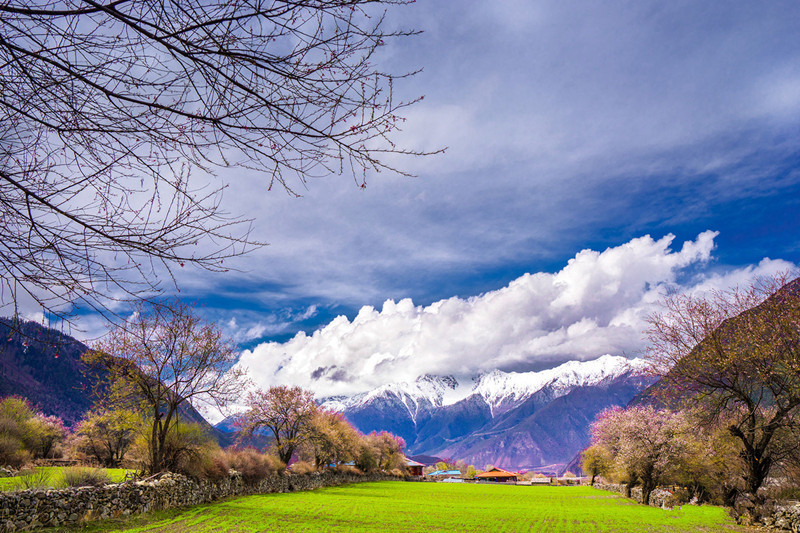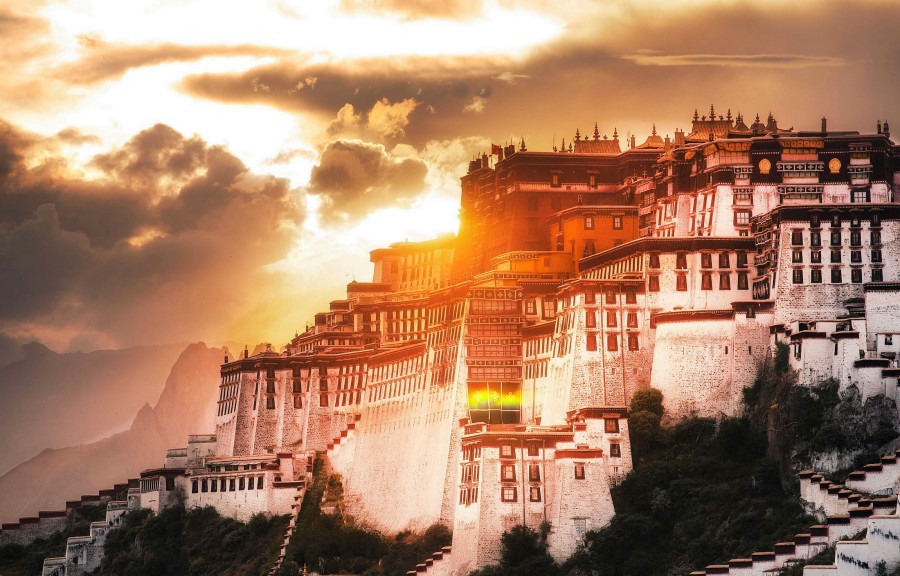14 Days Sichuan-Yunnan-Tibet Grand Shangri La Overland Tour from Chengdu to Lhasa
Features
14 Days Sichuan-Yunnan-Tibet Grand Shangri La Overland Tour from Chengdu to Lhasa
Day by Day Itinerary

Chengdu Arrival | Pick-up & Welcome Dinner
Welcome to Chengdu, the Hometown of Giant Pandas! Your private driver and guide will be ready for you when you arrive in Chengdu. Enjoy a trouble-free transfer to your hotel. The rest of today is yours to relax in panda city on your own.
Arrival Ideas:
Chengdu is well connected by air and high-speed rail. There are two airports - Chengdu Shuangliu International Airport and Chengdu Tianfu International Airport operating many international and domestic airlines. Travelers can go to Chengdu by air from most cities in China, like Hong Kong, Beijing, Shanghai, Guangzhou, Xian, Guilin, Hangzhou, Kunming, Lhasa, Lanzhou, Wuhan, Xiamen, Guiyang, Chongqing… In addition, travelers can take high speed train to Chengdu from Xian (3-4 hours), Chongqing (1.5-2 hours), Guiyang (3.5-4.5 hours), Kunming (6-6.5 hours), etc.
Free Time Ideas:
On this day, you have the flexibility to arrange your schedule and make your way to Chengdu. If you have enough time, you can explore some attractions such as Jinli Old Street, Chunxi Road, Taikoo Li, or Kuanzhai Alley. Additionally, you can visit Chengdu Renmin Park to immerse yourself in the relaxed and leisurely atmosphere of Chengdu.
Welcome Dinner:
In the evening, around 19:00, you and your group will enjoy a specially arranged welcome dinner hosted by the AOT team.
Chengdu - Zheduo Mountain Pass - Kangding - Xinduqiao - Yajiang
After breakfast, drive west from Chengdu towards Western Sichuan. Along the way, you will pass through Zheduo Mountain Pass, which sits at an altitude of 4,298 meters. The name Zheduo Mountain derives from its steep terrain and the unique winding road that features "nine bends and eighteen turns." Known as the "first pass of Kham," crossing Zheduo Mountain marks the official entry into the Kham Tibetan region. Furthermore, the Zheduo Mountain Pass serves as the initial pass on the Sichuan-Tibet Highway to reach an altitude exceeding 4,000 meters, signifying the transition from the Sichuan Basin and the Dadu River Valley to the western plateau of Sichuan. On clear days, you can catch a glimpse of the magnificent Gongga Mountain, also referred to as the "King of Shu Mountains," towering at an elevation of 7,508 meters, from this vantage point.
Continuing your journey, you will drive to Xinduqiao, situated in the western part of Kangding City, Garze Tibetan Autonomous Prefecture, at an altitude of approximately 3,460 meters. Although not officially designated as a scenic area, Xinduqiao is often called the "Photographer's Corridor." It is renowned for its enchanting lighting, vast grasslands, numerous streams, undulating mountain ranges, scattered Tibetan villages, and tranquil scenes of grazing cattle and sheep.
After enjoying the captivating views in Xinduqiao, you will proceed to Yajiang County for your accommodation.
Yajiang - Litang - Haizi Mountain Scenic Area - Daocheng White Pagoda
After breakfast, you will drive approximately 134 km from Yajiang County to Litang and make a stop there. In Litang, you can explore Letong Ancient Town and visit Litang Monastery.
Letong Ancient Town, known as "Letong" in Tibetan, is situated in the old town area of Litang County. It is home to numerous well-preserved Tibetan ancient architectural complexes, including the remarkable 400-year-old Renkang Ancient House. The original Renkang Ancient Street and Qianhu Tibetan Village have also been carefully maintained. Letong Ancient Town offers a captivating experience of Tibetan folk culture, showcasing its rich history and heritage. It boasts 13 Tibetan villages and over 4,000 Tibetan households, forming the most concentrated and largest group of Qianhu Tibetan villages worldwide. Given its high altitude of approximately 4,000 meters, the ancient town is often referred to as the "Sky City" by internet users.
Litang Monastery, also known as Changqingchun Ke'er Monastery, was founded in 1580 by the Third Dalai Lama, Sonam Gyatso. It is a significant Yellow Sect Tibetan Buddhist temple renowned as one of the most important temples in the Kham Tibetan region, holding great historical and cultural significance. The monastery serves as both a religious center and a repository of art and culture. Within its premises, you will discover a wealth of Buddhist scriptures, gilded Bodhisattva statues, precious artifacts, and renowned butter sculptures. Please note that there may be occasions when the temple is not accessible to all visitors or foreign tourists due to important religious ceremonies or other reasons. We kindly ask for your understanding in such cases.
After your exploration in Litang, head south to Daocheng County. On the way, you will visit Haizi Mountain Scenic Area, located between Litang County and Daocheng County in the Ganzi Tibetan Autonomous Prefecture of Sichuan Province. It has an average elevation of 4,500 meters. The total area of the reserve is 459,161 hectares, making it one of the largest ancient glacial relic areas on the Qinghai-Tibet Plateau. It is classified as a wetland and wildlife protection area, specifically safeguarding high-altitude wetlands and musk deer species. Haizi Mountain features a unique landscape characterized by gravel rivers, stone seas, and variously shaped glacial lakes (known as "haizi"). There are 1,145 haizi of different sizes scattered throughout the mountains, sparkling like thousands of shining diamonds.
Then, continue your trip to Daocheng White Pagoda, also known as the White Pagoda Temple, which is the largest white pagoda in the Ganzi Tibetan Autonomous Prefecture. The pure square layout forms the base of the Daocheng White Pagoda. The pagoda is divided into three parts: the spire, the body, and the pedestal. The pedestal is adorned with rows of prayer wheels for devout Tibetans to worship. The body of the pagoda is divided into three sections, with the top section housing a statue of a bodhisattva. The main structure of the white pagoda is a grand tower that reaches a height of 37 meters. The bottom three layers of the pagoda's pedestal are constructed in proportion to the base of the Qiniandian Hall in the Temple of Heaven in Beijing. These three layers of the pagoda feature a total of 512 brass prayer wheels and several stone relief decorations.
You will stay overnight in Daocheng County.
Daocheng - Yading Nature Reserve - Yading Village
Today, you will embark on a journey from Daocheng County to Daocheng Yading Nature Reserve, a distance of 80km that will take approximately 2-2.5 hours. This reserve has been hailed as the "Last Pure Land on Earth," discovered by Joseph Rock in 1928, and widely regarded as the "Soul of Shangri-La", an enchanting wonderland.
Upon reaching the tourist center, board a sightseeing bus that will transport you to Zhaguanbeng in about 1-1.5 hours. From there, indulge in a 2-2.5 hours' hike to Luorong Pasture (4,150m), passing through Chonggu Monastery (3,900m). Alternatively, you can choose to walk for 20 minutes to Chonggu Monastery and then take a 0.5-hour battery car ride to Luorong Pasture if you prefer to conserve energy. At Luorong Pasture, take pleasure in leisurely strolling amidst the serene landscape, surrounded by carefree grazing cattle and goats, vibrant layers of alpine forest, and a crystal-clear winding stream. The scene is enhanced by the awe-inspiring presence of three sacred snow-capped mountains: Xiannairi (Mount Chianrezig), Yangmaiyong (Mount Jambeyang), and Xianuoduoji (Mount Chanadorje). Pay close attention to the majestic appearance of Xianuoduoji snow mountain, resembling a mighty figure.
Next, prepare yourself for a challenging 5km hike that will take approximately 3-3.5 hours to reach the magnificent Milk Lake (4,600m). If desired, horse riding is available to Milk Lake for an additional fee. Marvel at the enchanting allure of this sacred lake, akin to a precious blue gem capable of evoking tears. Then, continue your journey by walking for another 0.5 hour to visit the Five Color Lake (4,500m), located just 0.3 km away. Immerse yourself in the breathtaking scenery, featuring majestic snow-capped mountains adorned in shades of white, grey, silver, and chocolate, alongside the mesmerizing blue and green waters, diverse alpine plant life, and a backdrop of clear skies. This sight is reminiscent of a world-class oil painting.
After the visit, descend and return to the entrance by car and bus. Our guide and driver will then accompany you to your hotel in Yading Village, where you can enjoy a good rest.
How to Choose the Route in Daocheng Yading Nature Reserve?
The Daocheng Yading Nature Reserve is divided into two routes: the long route (tourist bus final stops: Zhaguanbeng - Chonggu Monastery - Luorong Pasture - Milk Lake - Five Color Lake) and the short route (tourist bus final stops: Zhaguanbeng - Chonggu Monastery - Pearl Lake). The Milk Lake and Five Color Lake areas in the long route are located at an altitude of over 4,500 meters, which entails a challenging trek. Due to the thin oxygen, unpredictable weather, and the requirement to complete the entire journey on foot (approximately 10 kilometers round trip, taking about 6 hours), individual visitors are prone to severe altitude sickness and may have a less enjoyable experience. For the sake of your health and safety, we specifically advise the following individuals not to choose the challenging route:
Patients with heart, brain, vascular diseases, and hypertension.
Individuals with high-altitude sickness, mental disorders, or acrophobia.
Patients with lung diseases, asthma, and other respiratory conditions.
Elderly people, pregnant women, and those with poor physical endurance.
Important Travel Tips:
1. Today, you will need to transfer to the tourist bus that operates within the scenic area. As our original vehicle and driver cannot enter the scenic area, you will be staying overnight in Yading Village. We recommend that visitors bring only one backpackwith essential items such as toiletries, chargers, valuables, sunscreen, rain gear, warm clothing, energy snacks, and other important belongings.
2. The distance from Chonggu Monastery to Luorong Pasture is 6.7 kilometers one way, resulting in a total round trip of 13.4 kilometers. For this section, visitors have the option to take the electric shuttle, which takes approximately 20 minutes one way. The round trip ticket costs 70 yuan per person, while the one-way ticket costs 40 yuan per person. Please note that the cost of the electric shuttle is an additional expense based on the rates set by the scenic area.
3. There are two waysto reach Milk Lake and Five Color Lake from Luorong Pasture. The first option is to hike on the horse trail, which takes around 5-6 hours for a round trip and covers a distance of 10 kilometers. The second option is to ride a horse uphill, which takes approximately 3 hours. Please be aware that there is a horse rental fee of 300 yuan per person for a one-way trip, and visitors are responsible for this additional expense. If you choose to ride a horse, ensure your safety as you will be accompanied by a horse guide throughout the journey.
4. To manage the flow of visitors and avoid overcrowding, the scenic area has implemented visitor flow control measures. The daily limit for visitors is approximately 15,000 people. Our team will make advance reservations for your entrance tickets. However, in the event of high reservation numbers during peak season, if you are unable to visit Milk Lake and Five Color Lake, we will adjust the itinerary accordingly based on the actual situation.
5. The accommodation in Yading Village, where you will be staying overnight, mostly consists of local houses converted into guesthouses. Please be prepared for challenging conditions, as there may be occasional water and power outages depending on the season. In case the guesthouses are fully booked during peak season, there is a possibility of staying in Shangri-La Town instead.
6. At the entrance of the scenic area, you can find trekking poles available for rent or purchase. Visitors who are planning to hike can acquire or rent them between the entrance gate and the scenic area.
Yading Village - Daocheng Yading Nature Reserve - Xiangcheng County
In the morning, you will explore the short route of Daocheng Yading Nature Reserve (Tourist Bus Terminus: Zhaguanbeng → Chonggu Monastery → Chonggu Grassland → Pearl Sea). The round trip for the short route is approximately 3 kilometers, taking around 2-3 hours.
Here is the detailed itinerary:
Visit Chonggu Monastery, following the same route as Day 4, by taking the sightseeing bus and hiking. Take some time to appreciate the sacred Gelug Buddhist temple architecture in white, red, yellow, and black, and learn the interesting story behind the temple and Joseph Rock's visit. Capture excellent photos of the magnificent temple and the three pure white holy snow mountains. After a short walk, experience the beauty of Chonggu Grassland(4,020m), which can be compared to a fairyland on earth. Walk on the vast grassland resembling a soft, thick carpet in yellow and green, regardless of the season. Enjoy the enchanting chanting river, with its transparent water revealing countless little stones resembling grains of gold at the bottom. Don't miss the best viewpoint to admire the majestic Xianuoduoji snow mountain. Continue hiking for 30 minutes to reach Pearl Lake(4,120m), a captivating spot to admire the picturesque landscape of surrounding snow peaks, dense green and orange forests, shimmering prayer flags, and their reflection on the clear lake. It's also an ideal location to appreciate the sacred Xiannairi snow mountain.
In the afternoon, around 2:00 PM, please gather at the Tourist Center. It's time to leave Daocheng Yading and drive to Xiangcheng County (154km, about 3-3.5 hours) for accommodation.
Friendly Reminder:
Please ensure punctuality for the agreed meeting time with the tour guide.
The daily itinerary can be adjusted according to your needs. If you feel tired or unwell after the previous day's activities and prefer not to continue with the short route hike, you have the option to depart early and head to Xiangcheng for rest and recovery.
Xiangcheng County - Zhongde Village - Jinsha Bend - Deqin -Feilaisie (Yunnan)
In the morning, your group will depart from Xiangcheng County and drive to Deqin in Yunnan Province, visiting some stunning attractions along the way.
Your first stop will be Zhongde Village. Located east of Daocheng, bordering Litang to the north, and connected to Shangri-La in the south, Zhongde Village is a small town adorned with scattered white Tibetan houses. It has also served as a filming location for the movie "I Belonged to You."
The second stop will be Benzilan Town, which in Tibetan means "beautiful sandbar." Benzilan Town is situated in Deqin County, part of the Diqing Tibetan Autonomous Prefecture in Yunnan Province. It is nestled at the base of majestic snow-capped mountains, on the western bank of the Jinsha River, and intersected by National Highway 214. This village lies along an important transportation route known as the ancient road from Gutao to Duzi, a crucial segment of the historic Tea Horse Ancient Road. The location is truly unique, as the Jinsha River roars and rushes with great turbulence in the upper Benzilan section, while the lower section of the river widens, and its waters become calm and serene. We accessed Zhongde Village by taking the S217 provincial highway and continuing onto National Highway G214 (North Dian-Zang Highway).
Next, you will visit the First Bend of the Jinsha River, located approximately 15 kilometers from Benzilan Town in Deqin, at the border of Sichuan and Yunnan Province. The Jinsha River, flowing through mountains and valleys, carries mighty currents. As it reaches this point, the gorge gradually opens up. It seems to pause and slow down, as if wanting to ease the fatigue of its long journey. Gracefully tracing a large bend in the shape of the Greek letter "Ω" around the pyramid-like Ricon Peak, this winding path extends for several dozen kilometers, creating a remarkable natural spectacle.
Afterward, you will drive to the Feilai Temple Scenic Area in Meili Snow Mountain and check into your hotel for some rest. Meili Snow Mountain, also known as Prince Snow Mountain, is one of the most sacred mountains in Tibetan Buddhism. It boasts 13 magnificent peaks standing over 6,000 meters in altitude, earning the name "Prince's 13 Peaks." The highest peak, Kawagebo, rises approximately 6,740 meters, making Meili Snow Mountain the highest mountain in Yunnan.
Feilai Temple, located along the Dian-Zang Highway, is renowned for its exceptional position as a prime viewpoint for admiring Kawa Garbo Peak. Visitors can gaze upon the snow-capped mountains from Feilai Temple. If the weather is clear, one can witness the golden sunrise and capture images of the thirteen peaks of the Meili Mountain Range. Please note that photography is subject to weather conditions, and it is normal if one is unable to capture the desired shots. Your understanding is appreciated.
Feilaisi (Yunnan) - Yanjing Scenic Area - Mangkang County (Tibet)
This morning, try to wake up early and capture the incredible scene of the golden sunrise shining upon the dramatic snow-capped peaks from the Feilaisi Observation Deck (3,470 meters). (For reference, sunrise times are approximately 06:40-07:40 in spring, 06:25-06:45 in summer, 07:00-07:30 in autumn, and 07:55-08:10 in winter.)
After enjoying the beautiful time in Deqin, drive to the Yanjing Scenic Area while en route to Mangkang County. The ancient salt fields of Mangkang Salt Wells have a history of 1,300 years and are the only place in China that maintains the original traditional method of handcrafted salt drying. They are located over 120 kilometers away from Mangkang County, at an altitude of around 2,300 meters. Salt production is the livelihood of the people in the salt wells. There are a total of 3,454 salt fields, and the method of salt production here is the only one of its kind in the world, the oldest and most primitive. Pipes are used to bring brine up and pour it onto the salt fields. After intense exposure to sunlight, the water gradually evaporates, leaving behind salt crystals. The salt wells are also a place of geomantic significance, nestled in the embrace of the mountain gods. Throughout history, they have served as important transportation hubs. In the past, they were vital relay stations along the ancient Tea Horse Road, and now they are a must-pass route for National Highway 214, serving as a hub for various goods throughout the ages.
Later, drive to Mangkang County for accommodation. Mangkang is located in the easternmost part of Chamdo City in Tibet and is situated at the junction of Sichuan, Yunnan, and Tibet provinces. Entering Mangkang today means officially entering the territory of Tibet, and our itinerary also merges from the G214 National Highway (North Dian-Zang Highway) to the G318 National Highway (South Sichuan-Tibet Highway).
Important Reminder:
1. Photography enthusiasts can wake up early for morning shots of the snow-capped mountains. It is advisable to set up tripods in advance. If the weather and luck are favorable, it is possible to see the thirteen peaks lined up as dawn breaks.
2. If the Day 6 itinerary does not include an overnight stay at Feilai Temple due to scheduling reasons, the morning photography session can be adjusted to the morning. Specific accommodation arrangements will depend on the circumstances.
3. Entering Mangkang means officially entering the territory of Tibet. The guide needs to carry the necessary documentation for entry into Tibet and complete the registration process in Mangkang County.
Mangkang County - Dongda Mountain - Zuogong - Nujiang - Basu County
On this day, you will enjoy a scenic drive from Mangkang County to Basu, with the opportunity to explore some remarkable attractions along the way.
First, you will pass through the main gate of Mangkang County and ascend along the road to cross the Lawa Mountain Pass, which stands at an elevation of 4,376 meters.
Continuing on your journey, you will come across Dongda Mountain, located within the Zogang Line in Tibet. Recent measurements indicate that the actual elevation of Dongda Mountain Pass is 5,130 meters, making it the highest pass on the South Sichuan-Tibet Highway. During the summer months, you'll be treated to the sight of lush green grassy meadows and herds of yaks, creating a truly picturesque landscape.
As you venture further, you'll encounter the expansive Bangda Grassland, which stretches over 80 kilometers in length and spans approximately 20 kilometers in width. Known for its flat terrain and fertile pastures, this grassland is highly suitable for animal husbandry and is considered one of the finest natural grasslands in Tibet. Don't miss the chance to visit the observation deck at an elevation of 4,444 meters, offering breathtaking views of winding rivers and vast grasslands.
Lastly, you'll experience the famous Nujiang 72 Turns, a winding mountain road situated at an elevation of 4,618 meters on the Sichuan-Tibet Highway. This road crosses the Nujiang River and features steep slopes and challenging paths. The altitude drops from 3,100 meters at its lowest point to 4,651 meters at the highest point of Yela Mountain Pass, resulting in a total altitude difference of 1,551 meters over a distance of approximately 12 kilometers.
Finally, you'll arrive in Basu County, where you will find accommodations for the night.
Basu County - Ranwu Lake - Midui Gracier - Bomi County
After breakfast, drive along the G318 National Highway and spend your time visiting Ranwu Lake, also known as Rakwa Tso. This stunning glacial lake is located in the eastern part of the Tibet Autonomous Region, China. It sits at an altitude of 3,850 meters (12,630 feet) and is surrounded by snow-capped mountains, lush meadows, and dense forests.
The lake is fed by glaciers and meltwater from the surrounding mountains, and its crystal-clear waters reflect the beauty of the landscape. Ranwu Lake is a popular destination for travelers who come to enjoy the scenery, hike in the mountains, and experience the unique culture of Tibet. In Tibetan, it is known as Rannu Co, with "Co" meaning "lake" in the Tibetan language. The lake is adorned with green grass and crops along its shores, while the mountainsides are covered in dense forests, creating breathtakingly beautiful scenery.
Later, continue driving another 47 kilometers to visit Midui Glacier. It is located approximately 100 kilometers east of Bomi County in Nyingchi Prefecture. This glacier is notable for being one of the lowest-lying glaciers in the world, with its snowline at around 4,600 meters. It has been recognized as one of the six most beautiful glaciers in China by China National Geography Magazine. The glacier boasts stunning icefalls, a giant ice basin, and a harmonious coexistence with surrounding mountains, forests, lakes, and villages. Take the eco-bus to explore the glacier's beauty up close, observing the unique formations, ice structures, and surrounding landscapes.
After the tour, drive to Bomi County for your accommodation.
Bomi County - Lulang Forest Sea - Segrila Pass - Nyingchi
On this day, you will drive from Bomi County to Nyingchi. On the way, first visit Guxiang Lake in Bomi. Located along the G318 national highway, there is a small island in the lake. The surroundings are peaceful, and the stones on the beach are smooth and tranquil. The lake water is clear and transparent, reflecting the sky, snow-capped mountains, and other natural scenery, creating a beautiful picture.
Later, continue your drive to Lulang Town. The majestic snow-capped peaks gradually fade from view, replaced by a lush expanse of tall trees. Welcome to Lulang Forest, a place of captivating natural beauty. The name "Lulang" originates from the Tibetan language, meaning "Loong King Valley" or "a place that will make you forget your home." This enchanting destination has earned the nickname "Switzerland of Tibet" for its resemblance to the scenic landscapes of the Swiss Alps. Travel enthusiasts often refer to it as "Snowy Switzerland" due to its vast year-round greenery, untouched forests, abundant azaleas adorning the mountains, and the meandering rivers that flow through the region. Lulang Forest is characterized by its dense vegetation, boasting a rich variety of trees such as cypress, spruce, and birch. The forest floor is adorned with a colorful carpet of wildflowers, enhancing its charm and vibrancy. It is a true haven for nature enthusiasts, offering opportunities for hiking, photography, and immersing oneself in the tranquility of the surroundings.
Embark on a delightful hiking experience in Lulang Forest, where an easy trek of approximately 3 hours awaits. This picturesque trail meanders through meadows and forests, treating you to panoramic views of the surrounding mountains. It's worth noting that the trails are generally well-maintained and easy to follow, but it's important to be prepared for changing weather conditions, including rain, snow, and strong winds, especially at higher altitudes. While exploring Lulang Forest, be sure not to miss the chance to witness the awe-inspiring Mount Namche Barwa. From certain vantage points, you'll be treated to a breathtaking panoramic vista of the mountain and the lush meadows that surround it.
Later, drive to Segrila Pass, which is located 48 kilometers away. Segrila Pass is renowned as one of the highest road passes in Nyingchi, standing at an impressive elevation of 4,768 meters. Positioned on the southeastern edge of the Nyainqentanglha Range, it provides awe-inspiring panoramic vistas of the snow-capped peaks that envelop it. Amongst these majestic peaks, you will be treated to the remarkable sight of Mount Namche Barwa, the highest mountain in the eastern Himalayas. Mount Namche Barwa, towering at a staggering elevation of 7,782 meters, is celebrated for its breathtaking beauty and is widely considered one of the most awe-inspiring peaks in the entire region. Its surroundings are adorned with stunning landscapes, featuring deep gorges and dense forests that only enhance its majestic allure. The slopes of the mountain are embellished with glaciers, further enhancing its grand appearance. You will have ample time to spend at Segrila Pass, where you can admire the breathtaking panoramic views and capture stunning photographs. In the evening, you will be treated to the featured dish, Stone Pot Chicken.
Stay overnight in Nyingchi for accommodation.
Nyingchi - Basumtso Lake - Lhasa
After breakfast, you and your group will embark on a scenic journey from Nyingchi to Basumtso Lake (altitude: 3538 meters), a mesmerizing alpine oasis also known as Basong Tso Lake or Dragsum Tso Lake. Nestled in the heart of Gongbo'gyamda County, Nyingchi Prefecture, this ethereal gem beckons with its celestial allure. Basumtso Lake, aptly named "Green Water Lake" in Tibetan, unveils its splendor through pristine turquoise waters that mirror the majestic snow-capped peaks encircling its shores. As a national forest park and a distinguished 5A scenic area, it unveils a kaleidoscope of ever-changing landscapes throughout the day, each more enchanting than the last. Basumtso Lake holds profound spiritual significance for followers of Tibetan Buddhism, particularly those who embrace the Nyingma sect. It is revered as the dwelling place of the sacred spirits of Guru Rinpoche and Gesar King, revered figures woven into the tapestry of Tibetan mythology. The path leading to the lake winds through idyllic valleys and alongside majestic mountains, an awe-inspiring passage that prepares the soul for the breathtaking beauty that awaits.
Upon arrival, surrender to the captivating serenity that envelops the lake, immersing yourself in its tranquil ambiance and celestial charm. A visit to Tashi Island, a small islet nestled within Basumtso Lake, is an absolute must. This sacred haven holds deep significance for Tibetan Buddhists and is home to Tsozong Monastery, a humble yet profoundly meaningful Buddhist sanctuary. With origins dating back to the 17th century, this spiritual haven preserves invaluable relics of the faith. Take a leisurely hike around the island, a path that meanders through spellbinding vistas of the lake and its majestic mountain guardians. As you traverse the island in harmonious synchrony, you will encounter the legendary Peach Embracing Pine, remnants of the ancient water burial platform, and the awe-inspiring "Letter Tree" adorned with naturally formed Tibetan letters on its delicate leaves. Don't forget to pay reverence to the sacred well, an oasis where timeless traditions and spiritual connection intertwine. After this captivating experience, venture towards the enchanting embrace of Jieba Village - a realm straight out of a fairytale. This idyllic hamlet offers an unparalleled vantage point to behold the magnificence of Basumtso Lake and the regal snow-crowned peaks affectionately known as the "King's Throne" and "Burning Flame." The village, gracefully inhabited by a close-knit community of traditional Tibetan families, provides a gateway to immerse yourself in the rich tapestry of Tibetan culture.
After visiting Basumtso Lake, it is time to drive to Lhasa. The journey back will take approximately 5-6 hours.
Lhasa City Tour | Potala Palace, Jokhang Temple, Barkhor Street
Today, it is the time to explore Lhasa by visiting the world-famous Potala Palace, a World Heritage site and the picture behind the 50 RMB. And then, you will explore Lhasa by visiting Jokhang Temple, a world cultural heritage site renowned for its brilliant architecture, culture, art, and history. Finally, you can stroll through the famous Barkhor Street with locals and learn more about the daily kora life of Tibetans.
In the morning, you can walk up to the Potala Palace to explore. Not only is it the landmark of Tibet, but it is also the traditional residence and winter palace of the Dalai Lama (1649-1959). After climbing 365 steps from the gate of the Potala Palace to reach the Red Palace, you will arrive at the highest palace in the world at an altitude of 3,700m, where you can enjoy an excellent panoramic view of Lhasa city. As you explore the principal halls, chapels, and shrines of past Dalai Lamas in the Red Palace, you will be amazed and moved by its remarkable paintings, gorgeous jeweled works, skilled carving, colorful ornamentation, and the mystery stories behind the treasures. Inside the Potala Palace, you will meet many Tibetan pilgrims who come from afar to pray at this sacred site, making it a lifetime destination for them. You can also ask your guide to provide more stories about Songtsen Gampo, the 33rd king of Tibet, who first built the Potala Palace in the 7th century for his marriage to Princess Wencheng of the Tang Dynasty. (Please note that the visit order may be adjusted based on the visiting time specified on your Potala Palace ticket. All visitors are required to visit the palace with a tour group and remain inside for one hour. Please be advised that photography is prohibited inside the palace.)
Located in the heart of Lhasa for over 1300 years, the Jokhang Temple is an important pilgrimage site for Buddhists from all over the world. Famed as the spiritual center of Tibet, it is said that the Jokhang Monastery was built for King Songtsen Gampo's two brides: Chinese Princess Wencheng and Nepalese Princess Bhrikuti. "Jokhang" means "House of Buddha", and it houses a life-size statue of the 12-year-old Sakyamuni, which is considered a treasure of the Buddhist world. This is why Buddhist pilgrims consider it the holiest destination. The Jakhong temple is also renowned for its beautiful architecture. You can admire the intricate carvings, colorful murals, ornate decorations, and details of the building, which is a masterpiece of Tibetan architecture. Time seems to stand still as you watch people pray in front of the temple during the day and night. (Please note that the visit order may be adjusted based on the reservation of your Jokhang Temple Ticket Reservation.)
Afterward, take a walk on busy Barkhor Street near the Jokhang Monastery, which was a place for Buddhists to do a kora (pilgrim circuit) in ancient times. Nowadays, it has become a thriving local market where you can drink a pot of yak butter tea, dress in Tibetan clothes for photos, and pick up some local Tibetan, Nepalese, and Indian handicrafts and souvenirs.
In the evening, enjoy a group dinner featuring delicious Tibetan cuisine, specially offered by AOT team.
Lhasa to Yamdrok Lake Tour | Yamdrok Lake, Xiazhulin Temple
This morning, head to Yamdrok Lake from Lhasa (125km, about 3 hours) to appreciate the amazing natural landscapes. Then, pay a visit to the quiet Xiazhulin Temple on the way back to Lhasa for a panoramic view of the Yarlung Zangbo River.
When reaching Kampala Pass (4,797 meters), you’ll have a breathtaking view of Yamdrok Lake (a freshwater lake) down below, as well as spectacular views of the holy Mt. Nyenchen Khangsar in the distance. It would be best to have your camera ready to capture its beauty. Yamdrok Lake is one of the four largest sacred lakes in Tibet, along with Lhamo Latso Lake, Manasarovar Lake, and Namtso Lake. It offers stunning views of the Tibetan plateau and is believed to help Tibetans find the reincarnated soul of the Dalai Lama. Moreover, you will be happy to see dressed-up Tibetan mastiffs/dogs, goats, and yaks there. It is optional for you to pay 5-10 yuan to pose with them and take photos; for local Tibetans, it’s a source of income for their families.
Located 15km away from Lhasa Airport, Xiazhulin Temple belongs to the Gelug Sect of Tibetan Buddhism. It is small and quiet compared to other popular ancient temples. With an altitude of 3200m, Xiazhulin Temple is the best spot to view the Yarlung Zangbo River (the Brahmaputra River), one of the longest rivers in Asia, spanning about 2,900 km. Tibetans consider the Yarlung Zangbo River to be a holy river. It originates in the Himalayas of Tibet and flows through several countries, including India, Bangladesh, and Myanmar, before emptying into the Bay of Bengal. Xiazhulin Temple is also famous for enshrining the body of the auspicious goddess. According to legend, she was born a thousand years ago and was 12 years old when she passed away. After her passing, her body naturally shrunk to only one cubit high, sitting in a Tara posture, with one eye slightly open, as if she were half asleep. It is believed that she is the true incarnation of the auspicious goddess Green Tara, who was later enshrined in this temple. The Lamas inside the temple are kind and happy to answer questions and explain the wall paintings there.
Lhasa Departure | Hotel Check-out and Airport Transfers
It is time to end your 14-day Sichuan Tibet Tour, and your guide will escort you to the airport/train station for your flight or high-speed train to your next destination.
Thank you for choosing Asia Odyssey Travel for your China tour, and we are always here, working for you, and hope to see you again for your next trip to China/Asia. Have a safe journey!
Related Tours
Price Description
Price Included

Price Excluded



 Tours
Tours
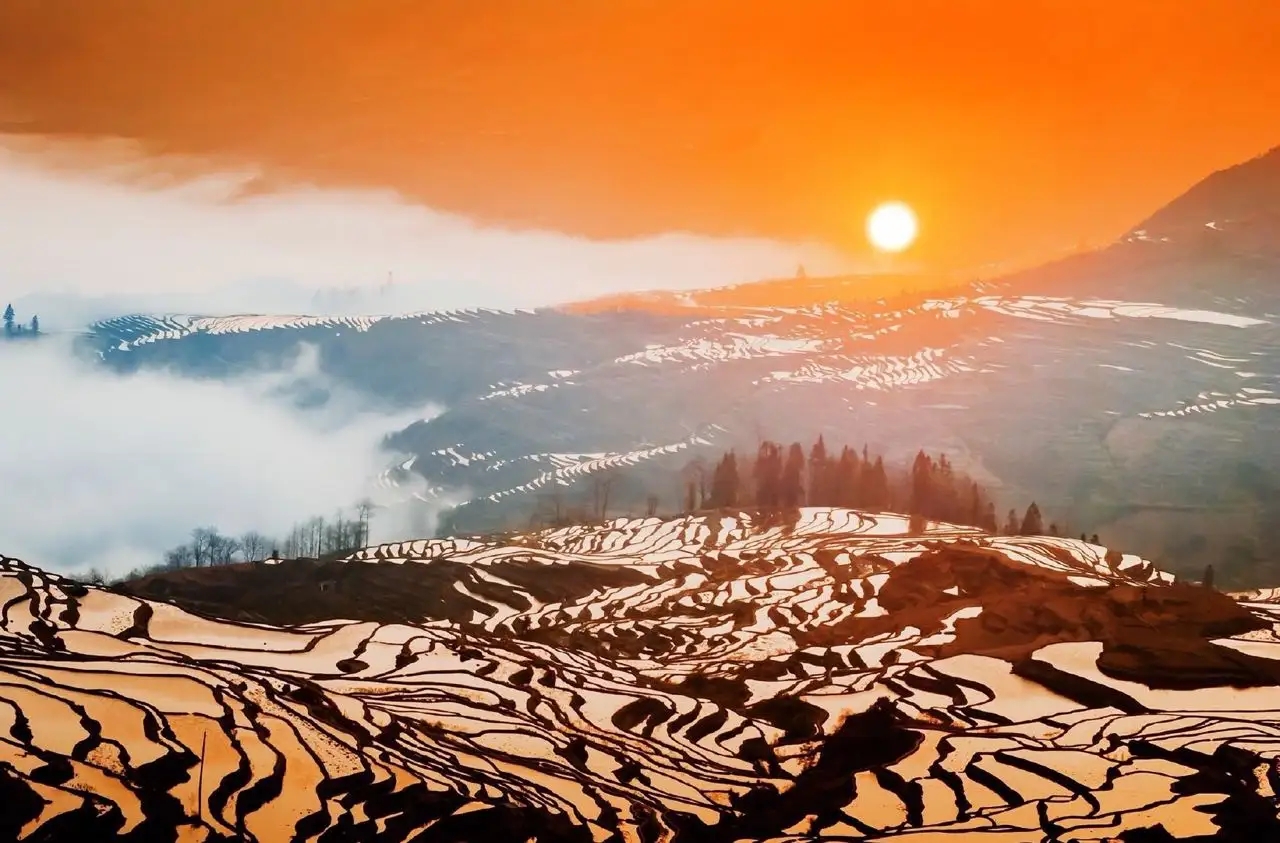
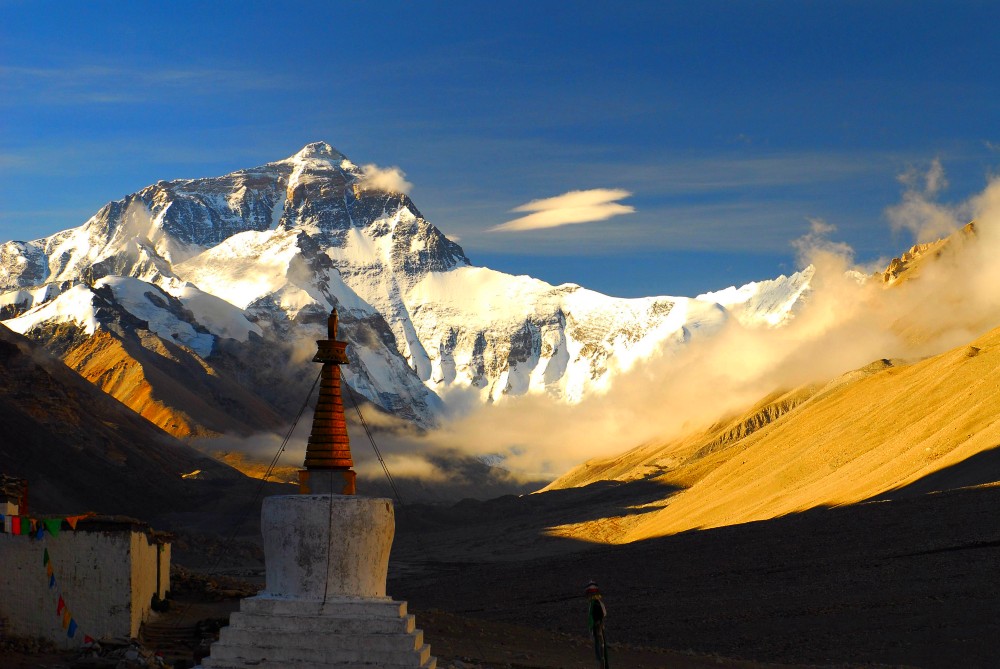
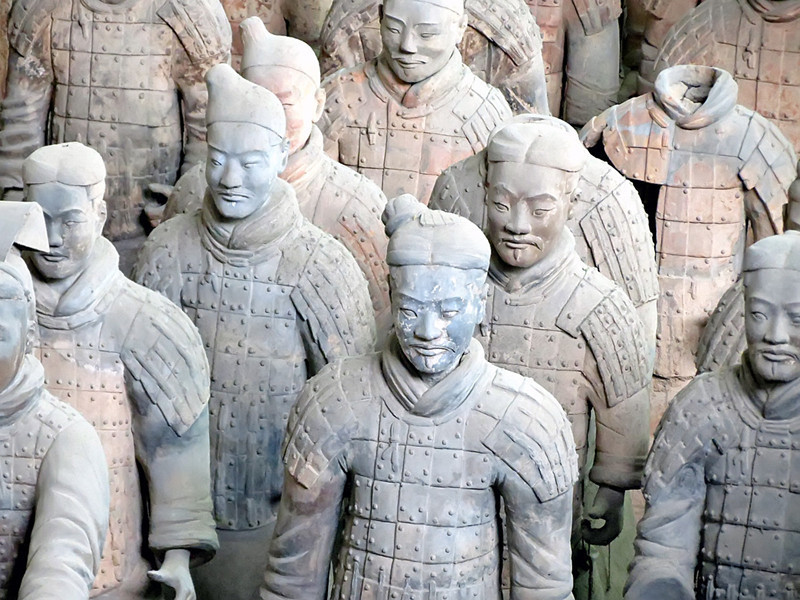
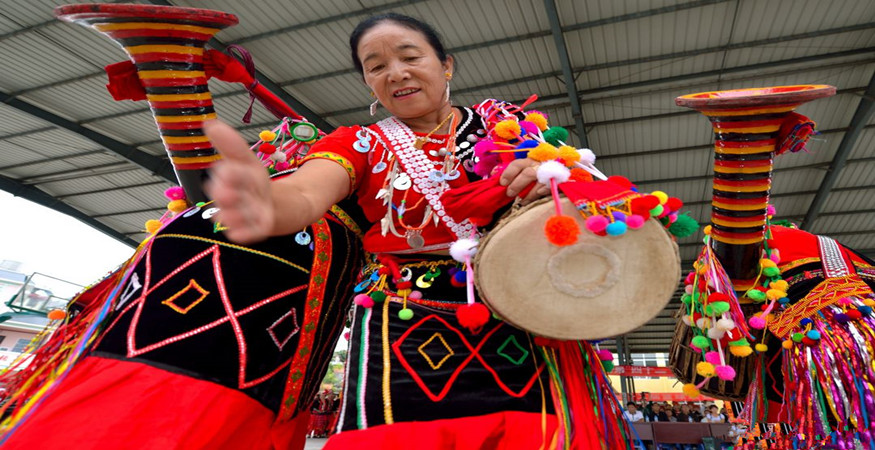
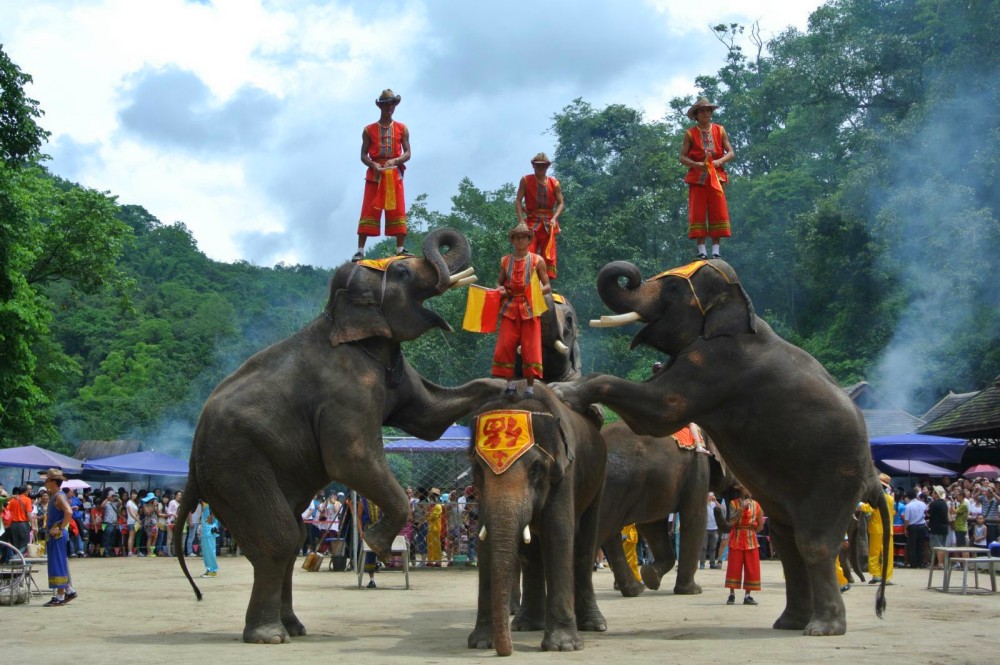
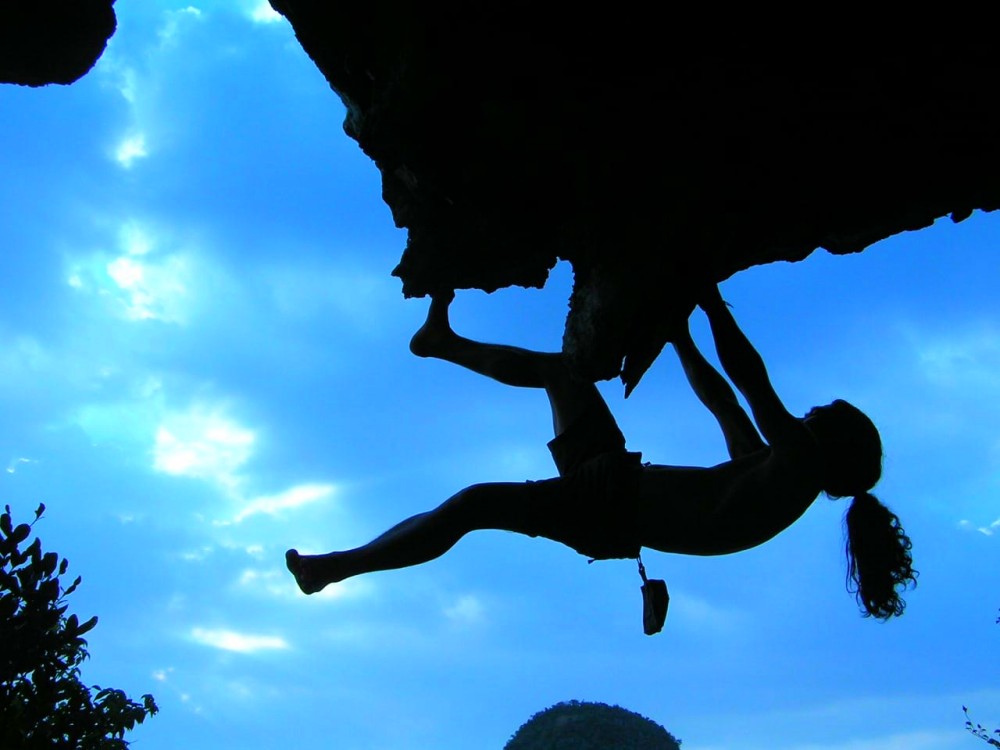
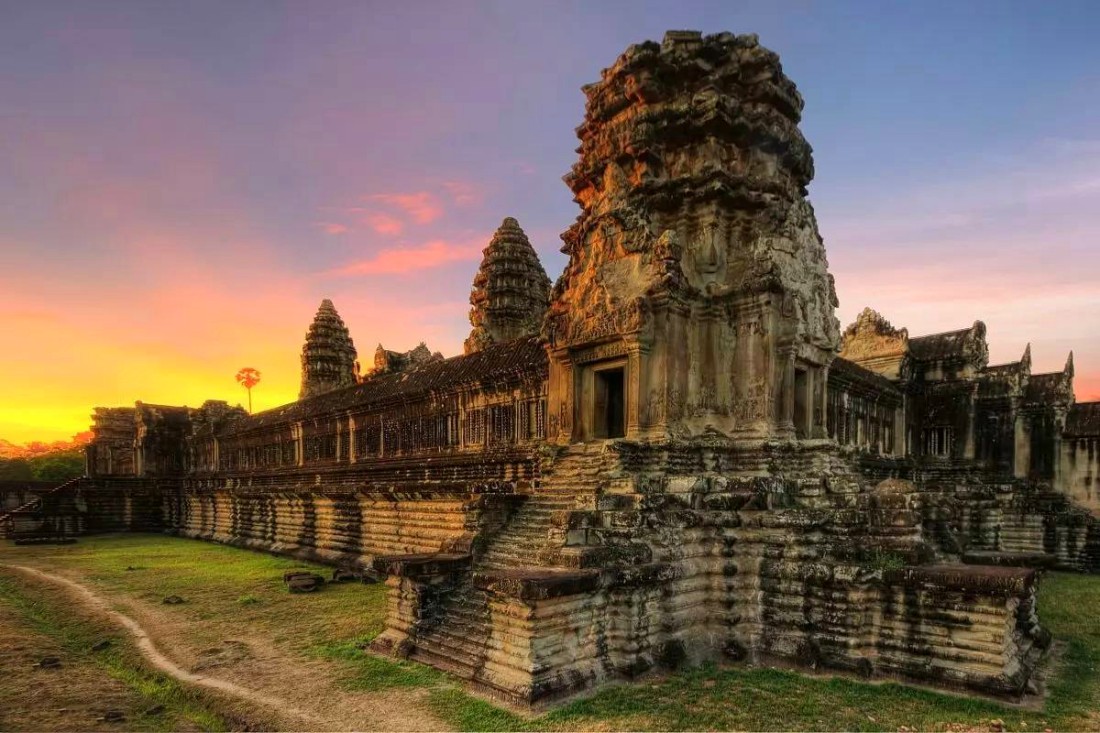
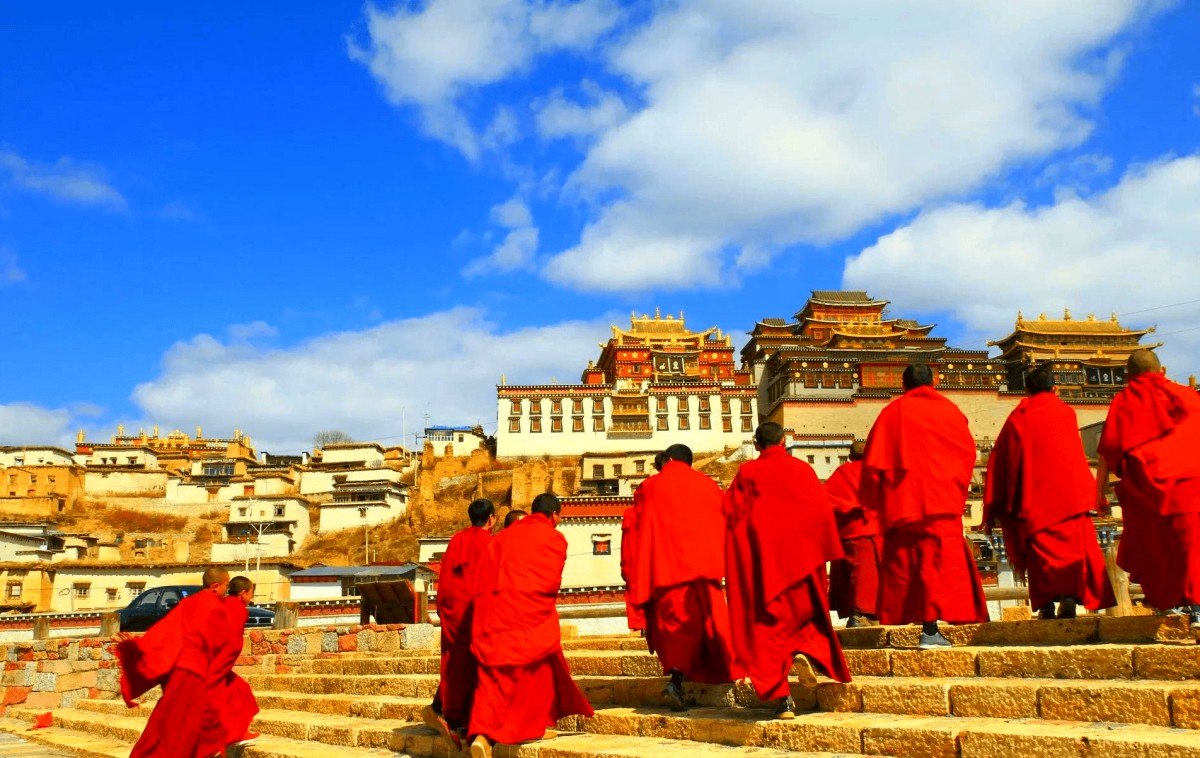

 Destinations
Destinations Attractions
Attractions Golf
Golf Customize
Customize About Us
About Us Contact
Contact




